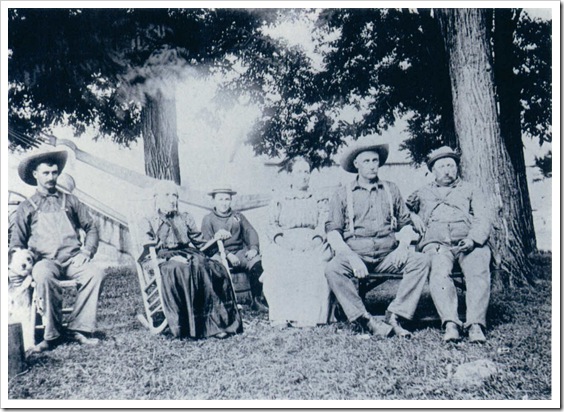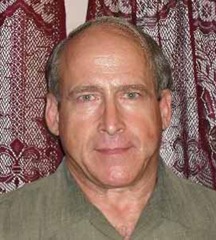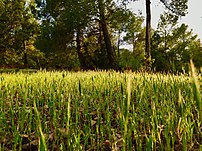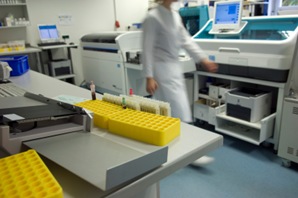I don’t often post pure genealogy on this blog, but I thought I would take a break from genetic genealogy and join in on the Genea-Bloggers Weekly Genealogy Blogging Prompt, which was: “Upload your favorite picture and talk about it on your blog. Answer the who/what/when/where/why of the subject matter and explain why it is your favorite.â€
Although it is nearly impossible to pick a single favorite from my extensive photo collection, I chose the following photo as one of my favorites:
People (L to R): Frank Bettinger (my great-grandfather), Angeline Taylor Bettinger (my great-great-great-grandmother born in 1815!), Ward Bettinger (my great-great-uncle), Melissa Albro Bettinger (my great-great-grandmother), Edgar Bettinger (my great-great-grandfather), and George Bettinger (my first cousin three times removed). Unfortunately, I never met anyone in this photo, although I’ve heard a great deal about them.

 An international team of researchers have concluded that humans entered the Americas from Asia along at least two different paths. By studying two rare mtDNA haplogroups found in Native Americans – D4h3 and X2a – the researchers conclude that D4h3 spread into the Americans along the Pacific coast while X2a entered through the ice-free corridor between the
An international team of researchers have concluded that humans entered the Americas from Asia along at least two different paths. By studying two rare mtDNA haplogroups found in Native Americans – D4h3 and X2a – the researchers conclude that D4h3 spread into the Americans along the Pacific coast while X2a entered through the ice-free corridor between the  I recently wrote about using genetic genealogy to potentially identify a male’s unknown surname. Although I had in mind using DNA to find an adopted male’s biological surname, the method has numerous other applications. For instance, it can be used in an attempt to identify the surname of a male who has forgotten his biological surname.
I recently wrote about using genetic genealogy to potentially identify a male’s unknown surname. Although I had in mind using DNA to find an adopted male’s biological surname, the method has numerous other applications. For instance, it can be used in an attempt to identify the surname of a male who has forgotten his biological surname.

 The Virginia Commonwealth University Life Science Center has released the results of the
The Virginia Commonwealth University Life Science Center has released the results of the 
